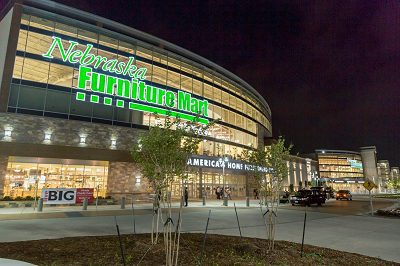Five years ago, executives at Nebraska Furniture Mart realized that the retailer’s supply chain needed to be a major strategy driver within the organization. It was actually a logical conclusion: the omnichannel brand carries more than 650,000 SKUs, encompassing furniture, flooring, electronics and appliances, and nearly 25% of its product portfolio is brand new each year. Its vendors range from supply chain-savvy manufacturers like Sony, Samsung and GE to mom-and-pop companies building furniture in their barn and communicating via fax.
By 2014, Nebraska Furniture Mart (NFM) had decided to move from its home-grown supply chain management system to an integrated system from Logility Voyager Solutions. Since then, the retailer has been involved in a continuous improvement process with the solution, leveraging its capabilities for benefits that are being realized throughout the company.
“The biggest piece that the solution provides for us is having one central location for information,” said Scott Hansen, Supply Chain and Logistics Manager for NFM in an interview with Retail TouchPoints. “We’re utilizing this platform across our entire organization — all the way from buying to transportation and operations as well as forecasting.”
Advertisement
Major benefits include:
• Improved data accuracy from vendors and carriers about when products are ready for delivery, allowing NFM to provide delivery information to customers with greater confidence;
• Higher in-stock rates;
• Optimized inventory spend and increased product turns;
• More efficient, less costly transportation due to load consolidation capabilities; and
• Tighter warehouse labor management from improved forecasting.
Integration Brings Efficiencies
The integrated solution allows NFM to speed up key processes. “When a purchase order is created it goes directly to the vendor via EDI or email, although the mom-and-pops are still getting a fax,” said Hansen. Suppliers with the capability of accessing NFM’s vendor portal “can go in and say ‘Scott, this product is ready for pickup.’ That had previously been done manually or via a weekly batch system. Now it’s all in the software suite.”
The integration also extends into logistics: “When the vendor says ‘This and this is ready’ and provides the weight and cube, that information goes into the transportation management module,” Hansen explained. “At any point we can build a trailer and dispatch it automatically. It’s quicker for vendors and for us to get the information back, which has made for dramatic improvements in lead times.”
Gaining greater visibility into the entirety of its supply chain data also provides NFM with valuable insights into its customers’ behavior. “We do a fair amount of special ordering, for example if a customer wants an appliance in lime green,” explained Hansen. “As we start analyzing the data that we’re getting through the software, we can look at what would normally be a special-order item and determine that it might represent a trend. We can decide whether we want to carry this color on a consistent basis. If we do make that change, then a future customer who wanted that appliance in lime green would be able to get it delivered from our warehouse the same day.”
From Multiple Methods To Chainwide Consistency
Integrated operations and analytics-based insights were nearly impossible with NFM’s previous home-grown supply chain management solution. “Each of our buyers had their own systems, from Excel spreadsheets to cocktail napkins, and each one was doing things a little bit differently, so we saw the need to standardize,” said Hansen.
NFM needed a system that would offer not just standardization but flexibility, to accommodate the variety of its product mix and the range of sophistication of its vendors. “We took a lot of time to map out our processes internally to understand what our own needs were,” said Hansen. “Logility had the flexibility that not a lot of other solutions offered, and we saw that we could meld their solution into our business model.”
The retailer began its implementation in 2014 with its highest-volume vendors. “The idea was to take care of the top 80% of your business before figuring out the inconsistencies of the remaining 20%,” said Hansen. “We’re still working through some of the more challenging vendors and challenging categories, but that’s our constant state of trying to evolve, the whole continuous improvement effort.”
These efforts extend well beyond Hansen’s supply chain domain. “As we refine our supply chain processes and tools, we want to expand into Sales & Operations Planning, and even show our finance team how this product can help them,” he said. “We’re spreading what we’re learning from this process throughout the organization.”









